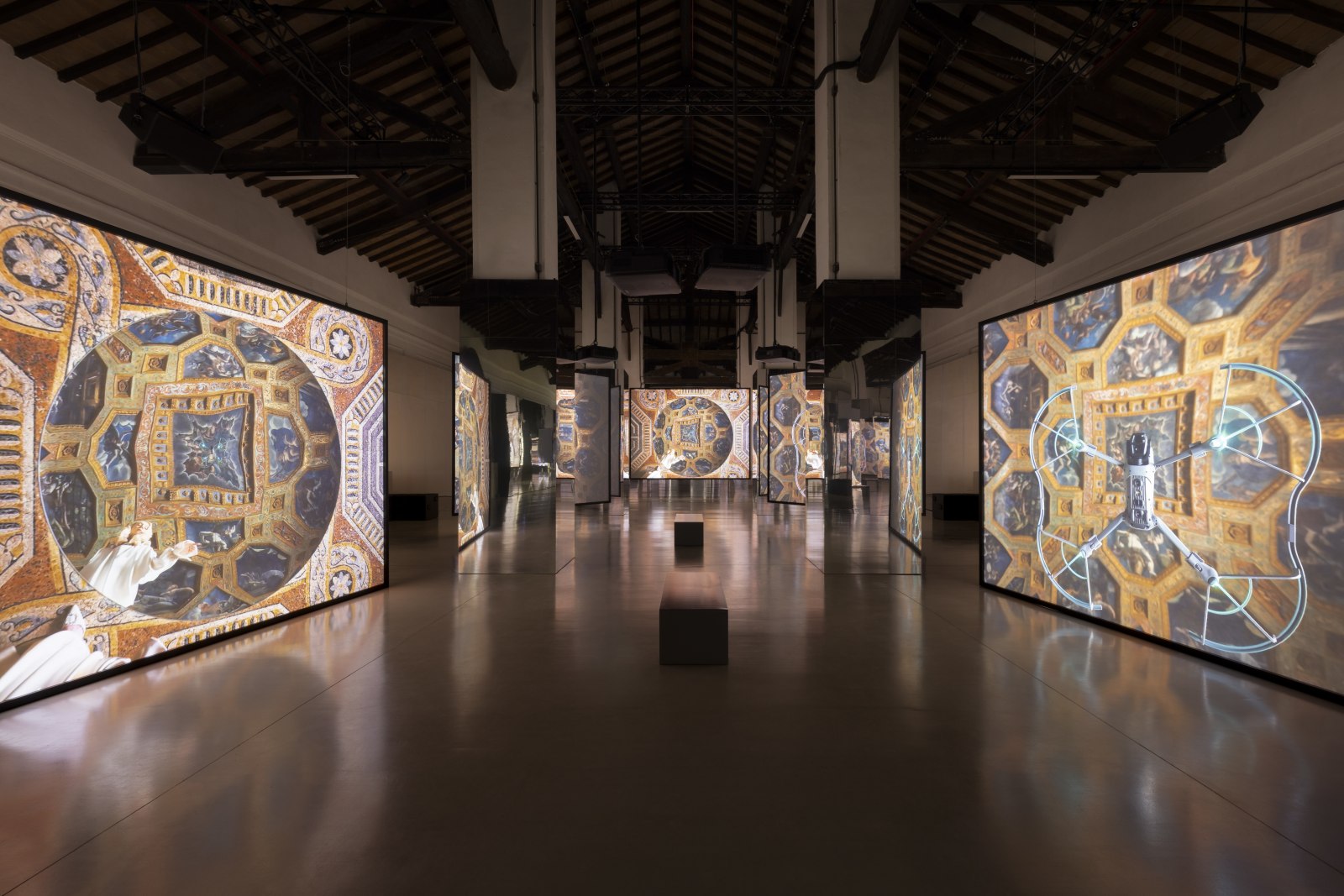Isaac Julien's new work All That Changes You. Metamorphosis premieres in Italy
Celebrating five hundred years of Palazzo Te in Mantua, British artist and filmmaker, Isaac Julien premiered his major ten-screen film installation, All That Changes You. Metamorphosis. The film, shot on location at Palazzo Te, showcases internationally renowned actors Sheila Atim and Gwendoline Christie. The two actors take centre stage playing the roles of prophetic, otherworldly celestial beings, as if brought to life from the fresco covered walls of the palazzo.
All That Changes You. Metamorphosis takes as its starting point Renaissance architect Guilio Romano’s masterpiece, Palazzo Te, and uses the lavish palace and frescoed walls to explore and reconsider themes of metamorphosis, philosophy, anthropology and ecology within the framework of the contemporary world.
The Palazzo’s striking frescos were an inspiration to create two goddesses – played by Gwendoline Christie and Sheila Atim – drawing from literary sources of Donna Haraway’s philosophical and political work Staying with the Trouble (2016) that challenges dominant narratives of apocalypse and of Naomi Mitchison’s novel Memoirs of a Spacewoman in which a scientist / time traveller tells of her experiences researching, communicating with, and falling in love with extraterrestrial life. Sheila Atim’s character is based on a 1993 speculative fiction novel Parable of the Sower by Octavia E. Butler, prophetic work set in a post-apocalyptic Earth affected by climate change and social inequality. The final script was developed collaboratively by Isaac Julien, Mark Nash, and Vladimir Seput, bringing together distinct intellectual and aesthetic perspectives.
Both protagonists time travel across a series of architectural spaces that function as visual metaphors and characters and delineate different temporalities — from the 16th-century Palazzo Te with Giulio Romano’s remarkable frescoes, through the postmodernist 20th-century Charles Jencks’s Cosmic House in London, to a futuristic glass “spaceship” located between England designed by Richard Found, and the media art collection pavilion created by Herzog & de Meuron for the Kramlich Collection. These spaces shape and respond to the character’s journeys while delineating different times.
The film’s visual language often unfolds in cyclical patterns, revisiting spaces and gestures to complete a narrative or emotional loop, as if time itself were folding back on its own surface. This sense of return mirrors the relational network that underpins the work and presents time not as a straight line, but as a living network of memory, matter, and perception.
“The ten-screen film installation constructs an oppositional and self-sustaining repertoire of images generating its own poetics. By reconfiguring the presentation through an architectural choreography, the language of images disrupts the narrative telos that shapes perception. The film offers an alternative visual grammar reclaiming nature’s agency where memory, poetry, and imagination converge in an act of resistance against the planetary destruction by visually reconfiguring the present and future, creating what Judith Butler calls the counter-imaginary”, said Isaac Julien.
The project, curated by Lorenzo Giusti, is presented in the newly renovated Fruttiere di Palazzo Te, and it runs until 1st of February 2026. The exhibition design was developed in collaboration with Adjaye Associates.







